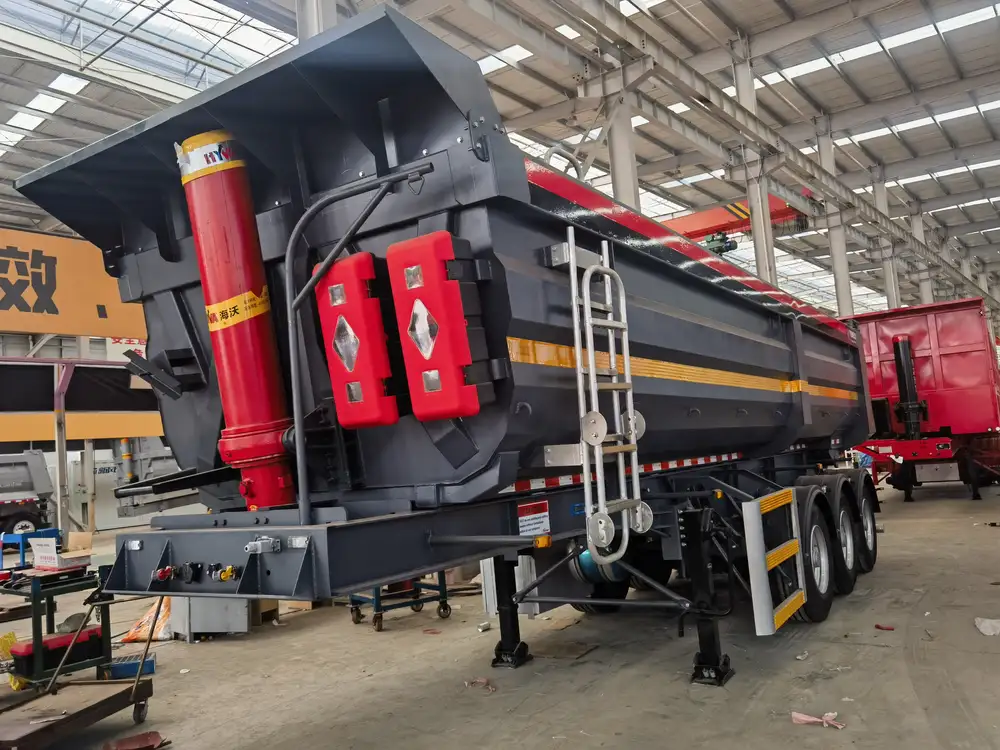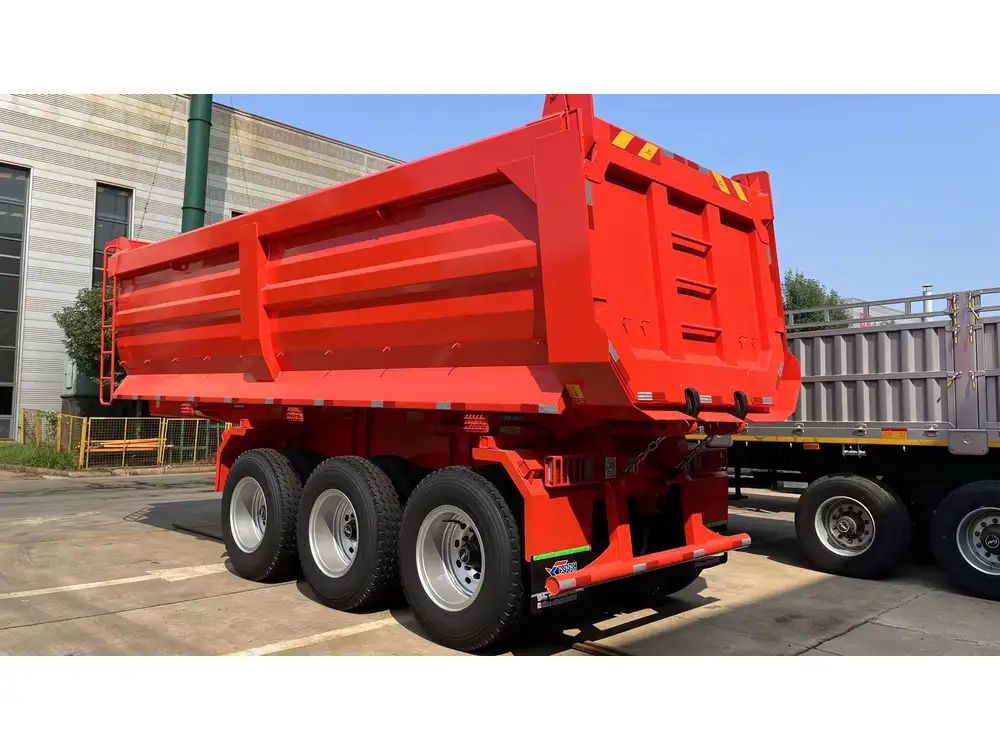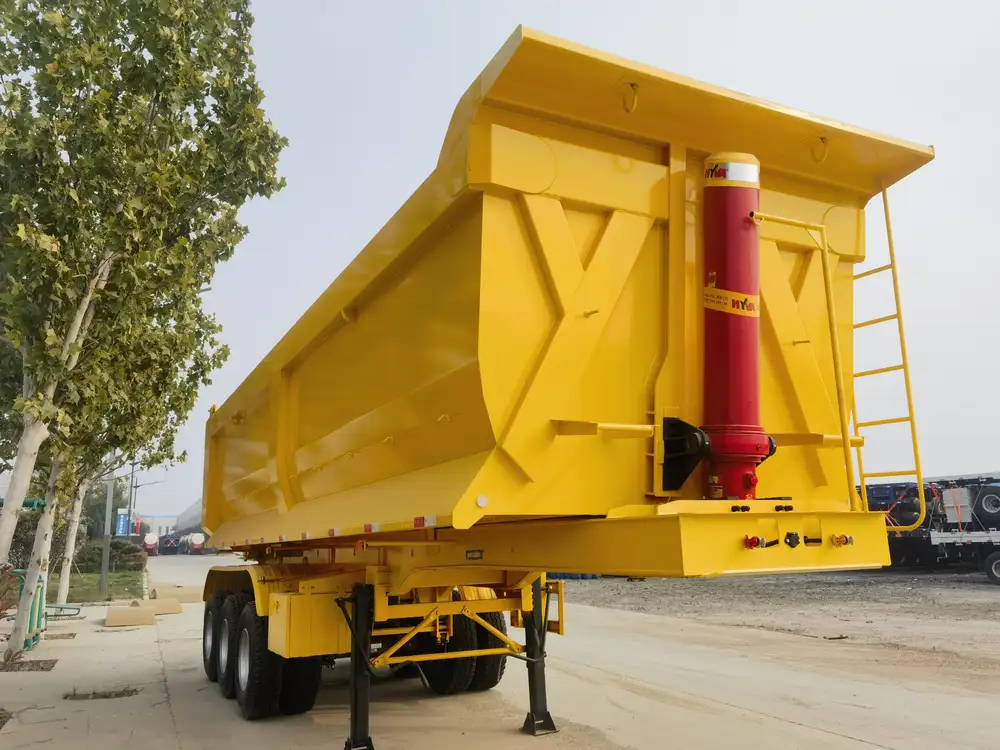In the trucking and construction industries, the capacity of semi dump trailers plays a pivotal role in operations. The question, “How many cubic yards can a semi dump trailer hold?” isn’t just a mere inquiry—it’s a significant consideration that impacts project planning, efficiency, and overall cost management. In this comprehensive guide, we delve deep into the specifications, factors influencing capacity, and practical applications of semi dump trailers, while equipping you with the knowledge to make informed decisions.
What is a Semi Dump Trailer?
Semi dump trailers are specialized vehicles designed primarily for transporting loose materials. They feature a hinge at the front that allows the rear to tip upwards, facilitating the unloading of contents. Often utilized in construction, mining, and agricultural sectors, these trailers effectively handle bulk materials such as gravel, dirt, sand, and more.
Key Components of Semi Dump Trailers
- Body Material: Typically made from steel or aluminum, the choice of material affects the weight capacity and durability.
- Axles: Most semi dump trailers have tandem or tri-axle configurations, impacting the overall weight distribution and capacity.
- Lift Mechanism: Hydraulic systems are standard for lifting, ensuring smooth and efficient unloading.
- Dimensions: Length, width, and height play critical roles in determining capacity.

Determining Cubic Yard Capacity of Semi Dump Trailers
To understand how many cubic yards a semi dump trailer can hold, one must consider both the dimensions of the trailer and its design.
Common Sizes of Semi Dump Trailers
| Trailer Length | Width | Height | Approximate Capacity (Cubic Yards) |
|---|---|---|---|
| 14 feet | 96 inches | 48 inches | 10 |
| 16 feet | 96 inches | 48 inches | 12 |
| 20 feet | 96 inches | 48 inches | 15 |
| 24 feet | 96 inches | 48 inches | 20 |
Above capacities are general estimates. Exact figures depend on the design and specifications of the manufacturer’s trailer.
Calculating Cubic Yards: The Formula
To derive the cubic yard capacity of a semi dump trailer, one can use the formula:
[ \text{Cubic Yards} = \frac{L \times W \times H}{27} ]Where:
- (L) = Length in feet
- (W) = Width in feet
- (H) = Height in feet
- 27 = Conversion factor from cubic feet to cubic yards

Example Calculation
For instance, if we have a semi dump trailer measuring 20 feet in length, 8 feet in width, and 4 feet in height, the calculation would look like this:
[ \text{Cubic Yards} = \frac{20 \times 8 \times 4}{27} = \frac{640}{27} \approx 23.7 \, \text{cubic yards} ]Factors Influencing the Capacity
While the size and dimensions provide a foundation for understanding cubic capacity, several additional factors must be considered:
1. Trailer Design and Features
Different designs can accommodate different types of materials. Some may have higher walls to increase load capacity, while others might have specific dimensions tailored for unique materials.

2. Weight Distribution
Properly distributing weight is paramount for safety and efficiency while driving. A well-distributed load can maximize the potential cubic capacity.
3. Material Type
The material being transported affects how much can be loaded. For instance, lighter materials like mulch will allow you to load more cubic yards than heavier materials like stone.
4. Height Restrictions
Regulatory requirements regarding height can limit how high materials can be loaded, thereby influencing total cubic yards.

5. Regional Regulations
Local laws may enforce weight limits and dimensions traced to road infrastructure, altering how much payload can be carried.
Practical Applications of Semi Dump Trailers
Understanding the capacity of semi dump trailers is not just about numbers; it helps in practical application across various industries.
Construction Industry
- Earthmoving: Effective for transporting soil and aggregate quickly.
- Site Preparation: Facilitates swift delivery of foundational materials.

Landscaping
- Bulk Material Transport: Ideal for delivering mulch, soil, and decorative stones efficiently.
Agriculture
- Fertilizer and Rock Transport: Used for moving large quantities of fertilizers and rock for landscaping or field applications.
Waste Management
- Debris Removal: Essential for clearing debris and ensuring quick site clean-ups after construction activities.

Choosing the Right Semi Dump Trailer for Your Needs
With so many variations available in the market, selecting the right model can be overwhelming. Here are some pointers to streamline the selection process.
Assess Your Main Usage
Identify the primary materials you will be transporting. Will the trailer be used for construction, landscaping, or waste management?
Consider the Weight Capacity
Ensure the trailer aligns with your regulatory needs, especially if you operate in jurisdictions with strict weight limits.

Evaluate Design and Build Quality
Investigate the materials used in the trailer. Steel options are generally more durable compared to aluminum, which may offer better fuel efficiency due to lower weight.
Review your Budget
Evaluate the total cost of ownership, including purchase price, maintenance, fuel consumption, and potential resale value.
Check Manufacturer Support
Before making a purchase, verify the manufacturer’s reputation for customer service and availability of spare parts. A reliable manufacturer like us can provide comprehensive warranties and service plans.

Tips for Maximizing Capacity While Ensuring Safety
Managing the balance between capacity and safety is paramount in using semi dump trailers effectively. Here are strategies for maximizing both.
1. Adhere to Manufacturer Guidelines
Always follow the manufacturer’s specifications for loading capacities to avoid overloading, which can lead to accidents or equipment damage.
2. Maintain Consistent Loading Practices
Implement techniques to ensure even distribution of materials, such as starting from the front and working backward, which promotes stability during transport.

3. Regular Maintenance Checks
Conduct routine inspections of the trailer’s tires, lift mechanism, and hydraulic systems to ensure optimal performance and safety.
4. Utilize Technology
Consider using weight scales or sensors to monitor the load dynamically, allowing for adjustments during transportation.
Conclusion: Making Informed Decisions for Efficient Operations
Understanding how many cubic yards can fit into a semi dump trailer is fundamental for anyone operating within industries that utilize such equipment. By taking into account the specifications, calculating the cubic yard capacity, and considering the relevant factors, manufacturers and operators alike can optimize their operations.
With informed decision-making, you can enhance efficiency, ensure compliance with regulations, and ultimately increase profitability. Whether you’re involved in construction, landscaping, or any related field, the right knowledge enables you to maximize value from every load.

Additional Resources
For an in-depth understanding of semi dump trailers and our latest models, feel free to explore the following:
- Semi Dump Trailer Product Catalog
- Safety Guidelines for Load Management
- Comparative Analysis of Trailer Designs
By leveraging this information, you not only optimize your operations but also position your business for growth and success in a competitive marketplace.



